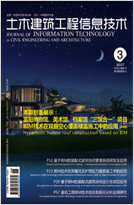Abstract:
The functions of modern cities are becoming increasingly complex and diverse, forming spatial areas that encompass various forms such as commerce, residence, industry, and ecology. Against the backdrop of advancing new urban infrastructure development to create livable, resilient, and smart cities, the construction and management of smart cities are presented with both unprecedented opportunities and numerous challenges. As representative information technologies in urban construction and management, BIMand CIM provide innovative technology-enabled support mechanisms for urban construction management from the perspectives of building micro-optimization and urban macro-development. Based on practical cases and application scenarios of BIM and CIM, this paper presents their typical applications in various stages of urban construction management. It conducted an analysis of the application characteristics of BIM and CIM technologies and further analyzes the necessity and challenges confronted of collaboration between BIM and CIM. On this basis, the collaborative path of BIM and CIM is proposed, and their future development directions are envisioned.










 下载:
下载: